But a tip of the iceberg
PARIS -- With every Euro final come the photographs that capture the action and the emotion of the beautiful game. This year’s match between Portugal and France resulted in precisely 1,723 AFP photos, 1,339 of them from inside the stadium alone.
But what does it take to produce those clean, beautifully framed shots? A team of photographers, editors and technicians working together seamlessly. Plus weeks of organization to boot. The photos themselves are just the tip of the iceberg.
 (AFP / Thomas Samson)
(AFP / Thomas Samson)Shooting the action inside the stadium this year for AFP were eight photographers and six remote cameras. Outside, there were three more shooters from high vantage points across Paris and one on the ground in the fan zone. And then there were the photographers in Lisbon and throughout France.
For the photographers on the field, the match is 90-plus minutes of non-stop work.
First off, they have to get the key action shots:
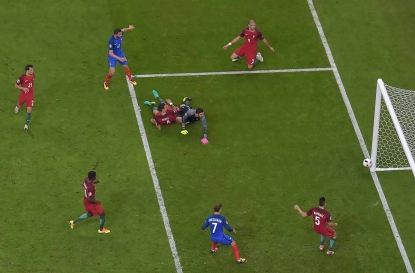 Close but no cigar. (AFP / Franck Fife)
Close but no cigar. (AFP / Franck Fife)Then there are the fans, both the traditional shots:
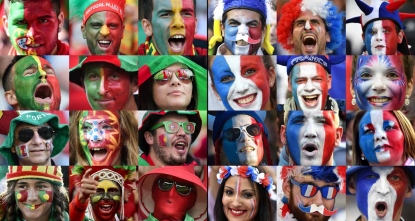 (AFP )
(AFP )
And ones a little different:
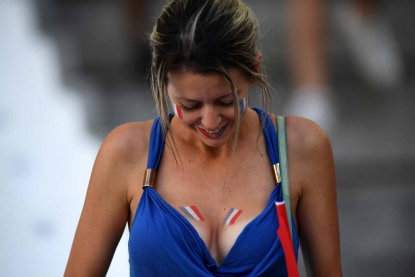 (AFP / Franck Fife)
(AFP / Franck Fife)They also have to keep an eye on the VIP box:
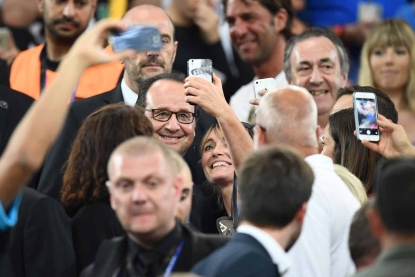 (AFP / Franck Fife)
(AFP / Franck Fife)Keep track of kids:
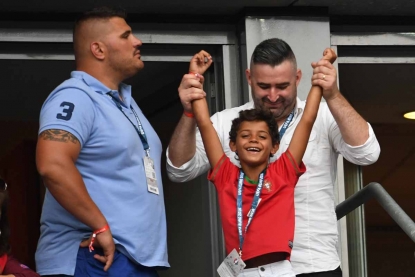 Cristiano Ronaldo's son, Cristiano Jr, cheers in the stadium ahead of the final. (AFP / Francisco Leong)
Cristiano Ronaldo's son, Cristiano Jr, cheers in the stadium ahead of the final. (AFP / Francisco Leong)And any surprises popping onto the field:
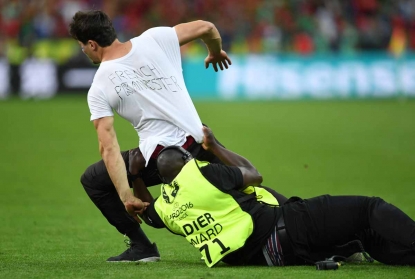 (AFP / Patrik Stollarz)
(AFP / Patrik Stollarz)There are moments of celebration:
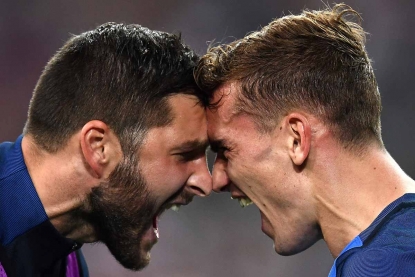 (AFP / Franck Fife)
(AFP / Franck Fife)Screams of pain and tears of joy:
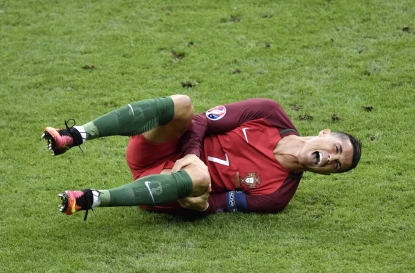 (AFP / Philippe Lopez)
(AFP / Philippe Lopez) (AFP / Martin Bureau)
(AFP / Martin Bureau)
There are synchronized headers:
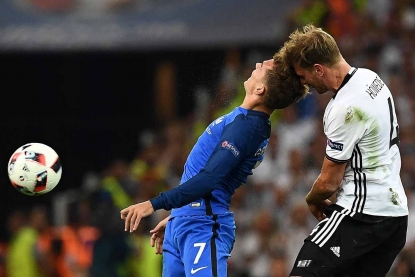 (AFP / Franck Fife)
(AFP / Franck Fife)And sometimes even synchronized coaching:
 (AFP / Martin Bureau)
(AFP / Martin Bureau)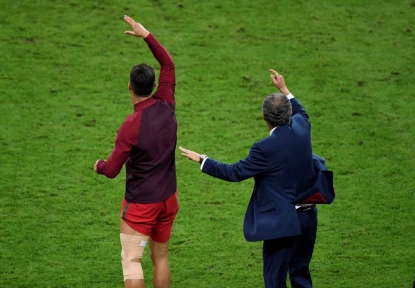 (AFP / Miguel Medina)
(AFP / Miguel Medina)
There is joy:
 After the winning goal. (AFP / Miguel Medina)
After the winning goal. (AFP / Miguel Medina)And despair:
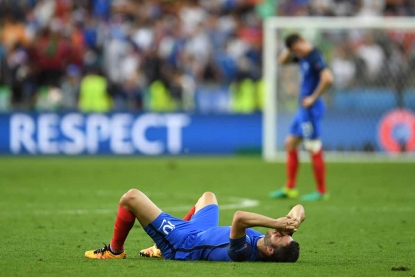 (AFP / Patrik Stollarz)
(AFP / Patrik Stollarz)And sometimes both in the same frame:
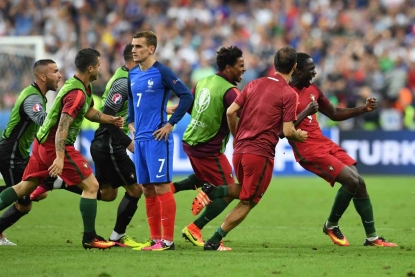 (AFP / Francisco Leong)
(AFP / Francisco Leong)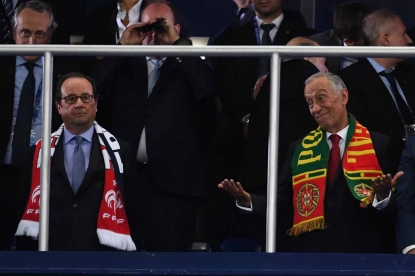 (AFP / Francisco Leong)
(AFP / Francisco Leong)
During the game, the photographers stand in their assigned spot and their cameras are connected to cables, which allow them to transmit their pictures quickly. Sometimes they work in “live” mode, meaning that every picture they snap goes straight to the editors. This saves time and allows the photographer to shoot without interruption, but means the the editors on the desk are getting flooded with shots.
Others work in ‘tag and send’ mode. They shoot some pictures, then look through them on their camera, tag the ones they like and send those to editors. This cuts down on the volume, but means that the photographer has to take his or her eyes off the match to send the pictures.
Of course getting great pictures and capturing moments is only part of the equation. Getting them to clients as fast as possible is just as important. In today’s world, speed is everything. This is where the editors come in.
The first action photo of the match needs to hit the wire in less than a minute. Think about that. You need to crop, caption and send the photo in less than a minute. Takes most people longer to tie their shoes.
 (AFP / Philippe Lopez)
(AFP / Philippe Lopez)Same goes for the goal pictures and celebrations. Especially in a game like this year’s final, where the goal didn’t come until overtime. You have one editor (with nerves of steel) choosing the best shot (no time for doubts) and cropping it and then handing it to a second editor, who captions it and sends it out. For goals, this process usually takes 30 seconds. You could say a blink of an eye.
 (AFP / Philippe Lopez)
(AFP / Philippe Lopez)And then there is THE shot -- of the winners lifting the trophy. This one is tricky because the photographers inside the stadium are now on the pitch and their cameras are no longer connected to the cables that send the photos to the desk. Instead, technicians are on the field, ready to grab the shooters' disks, run to a computer set up nearby and send the photos to the desk.
 (AFP / Valery Hache)
(AFP / Valery Hache)In any match of course, there is plenty of action off the pitch. The photographers outside must capture the mood:
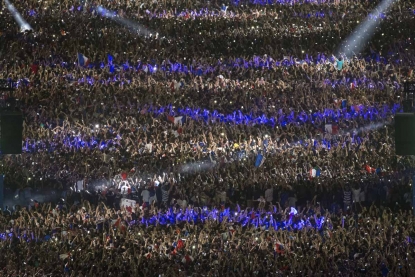 Celebrating France's semi-final win over Germany in the fan zone near the Eiffel Tower. (AFP / Geoffroy Van Der Hasselt)
Celebrating France's semi-final win over Germany in the fan zone near the Eiffel Tower. (AFP / Geoffroy Van Der Hasselt)As well as the key moments of the game:
 (AFP / Geoffroy Van Der Hasselt)
(AFP / Geoffroy Van Der Hasselt)The celebrations:
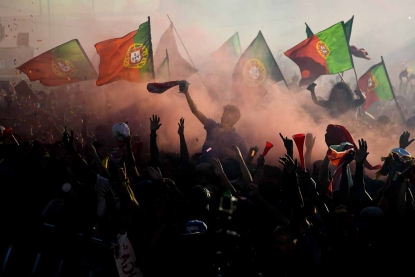 Portugal supporters in Lisbon. (AFP / Patricia De Melo Moreira)
Portugal supporters in Lisbon. (AFP / Patricia De Melo Moreira)And the despair:
 (AFP / Romain Lafabregue)
(AFP / Romain Lafabregue)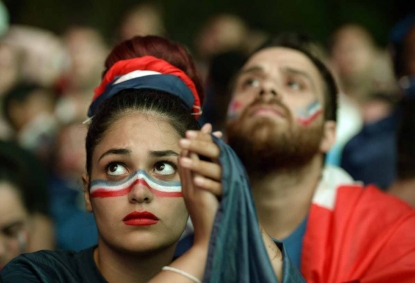 (AFP / Alain Jocard)
(AFP / Alain Jocard)
And the inevitable skirmishes:
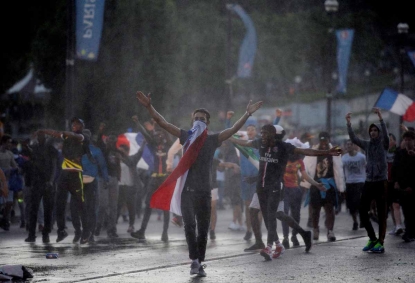 Clashes near the fan zone at the Eiffel Tower.
(AFP / Alain Jocard)
Clashes near the fan zone at the Eiffel Tower.
(AFP / Alain Jocard) Tear gas under the Eiffel Tower during clashes near its fan zone. (AFP / Thomas Samson)
Tear gas under the Eiffel Tower during clashes near its fan zone. (AFP / Thomas Samson)So what does it take to bring you pictures of a Euro final? A team of shooters and editors, with a technical setup that with a little luck works without a glitch. And then the team goes home in the wee hours of the morning, having captured another final of the beautiful game for the history books.
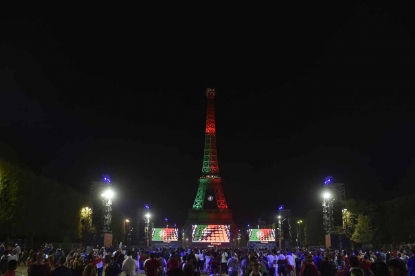 (AFP / Alain Jocard)
(AFP / Alain Jocard)



